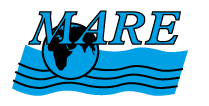A program of the Lawrence Hall of Science that seeks to increase ocean literacy through informal and formal education initiatives
The Lorax
When Dr. Seuss gets serious, you know it must be important. Published in 1971, and perhaps inspired by the "save our planet" mindset of the 1960s, The Lorax is an ecological warning that still rings true today amidst the dangers of clear-cutting, pollution, and disregard for the earth's environment. In The Lorax, we find what we've come to expect from the illustrious doctor: brilliantly whimsical rhymes, delightfully original creatures, and weirdly undulating illustrations.
Growing Up Wild: Penguins
This informative photo essay of the life cycle of Adelie penguins is sure to captivate curious young readers. Stunning color photographs and clear, accessible text flow in this special view of Adelie penguin chicks as they hatch and grow. A truly great invitation to learning. Author’s Note, Glossary, Index.
Sea Horses (Early Bird Nature)
Beautiful photographs depict several species of sea horses in their natural environments. The reader will learn how the characteristics and behaviors of these fascinating fish help them survive and meet their basic needs. The book concludes with a discussion of how people can help protect sea horses and how sea horses help people. Table of Contents, Note to Adults, Glossary, Index.
Coral Reefs
Dr. Sylvia Earle, marine biologist and oceans ambassador extraordinaire is the author of this colorful picture book on coral reefs. The reading level and illustrations are low for seventh graders, but the book is packed with outstanding factual information, a fun at-home experiment, and lovely illustrations.
Invertebrates
This is a current survey of the 34 animal phyla and serves as both a college course text and an excellent reference on invertebrate biology. It is organized around the themes of body plans and evolution (phylogenetics).
Sea Soup: Phytoplankton
A teaspoon of sea water can hold a soupy serving of a million phytoplankton! Invisible to the naked eye, plant-like phytoplankton are the source of our atmosphere, our climate, our ocean food chain, much of our oil supply, and more. They're also food for zooplankton, tiny animals that often look like weird life forms from outer space. A great teacher reference and student reader for the fifth grade activity "The Great Plankton Race."
In the Swim
"There are uglier fish than a blenny-- But not many..." That's just the start of one of 21 creative and imaginative poems focusing on a variety of ocean creatures. A fantastic literature and poetry connection accompanied with whimsical water-colored illustrations makes this a good read out-loud or student reader.
A Swim Through the Sea
An A to Z exploration of ocean life both familiar and unexpected. Can be used as an early elementary ABC book or as a inviting reference for fifth grade. Beautiful watercolor illustrations have a "near-batik" quality.
A Drop of Water
Beginning with a child exploring the water in a creek, Morrison imagines how a drop on his finger made its journey through the water cycle. Detailed, multicolored illustrations take readers high in the sky as the red-tailed hawk flies and the raindrops fall, providing a view of the marsh and the mountain stream from above. Finally, the pictures zoom back to a close-up of the boy to complete the circle. Readers can appreciate this narration on two levels: first, as a simple story of the hydrologic cycle; and second, as a search to find various types of plants and animals.
The Vanishing Manatee
Introduces the playful manatee and discusses its future and its relationship with humans.
Pages




